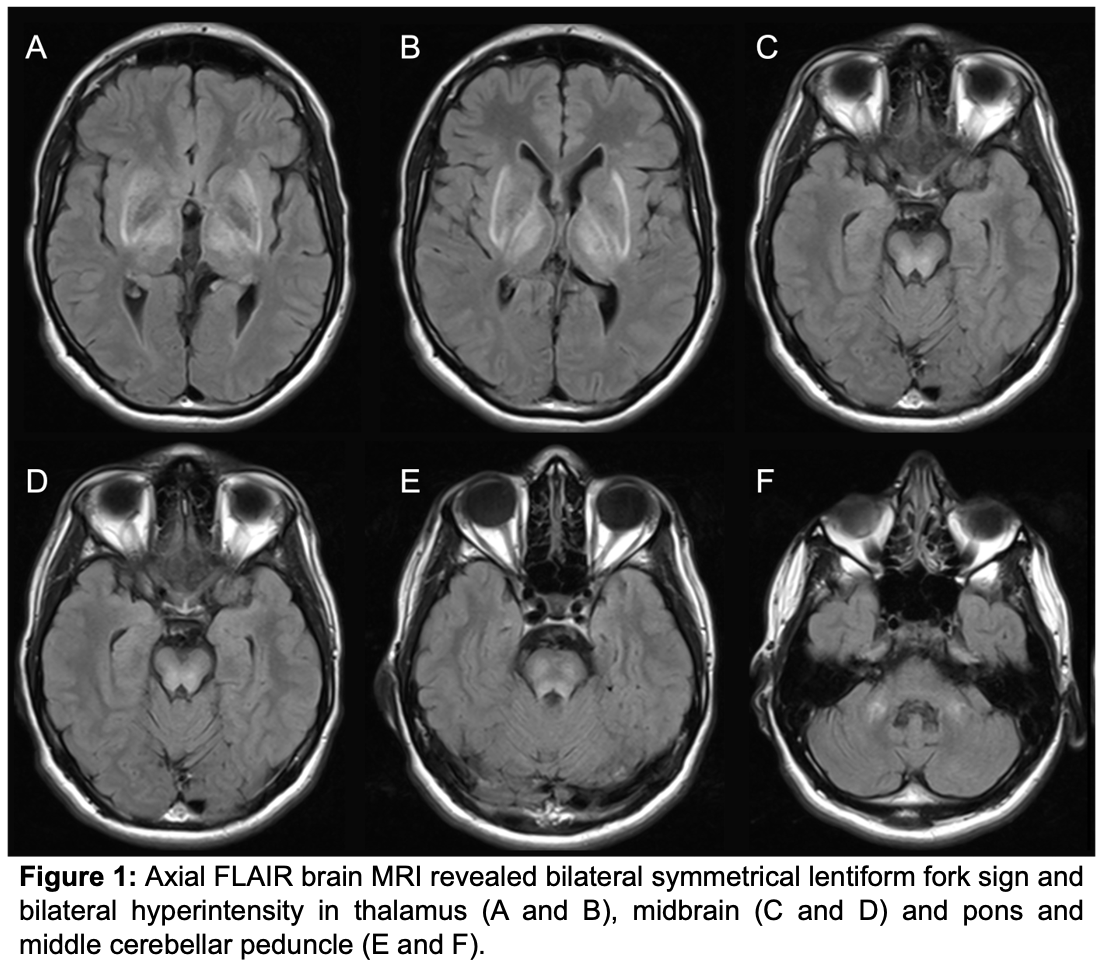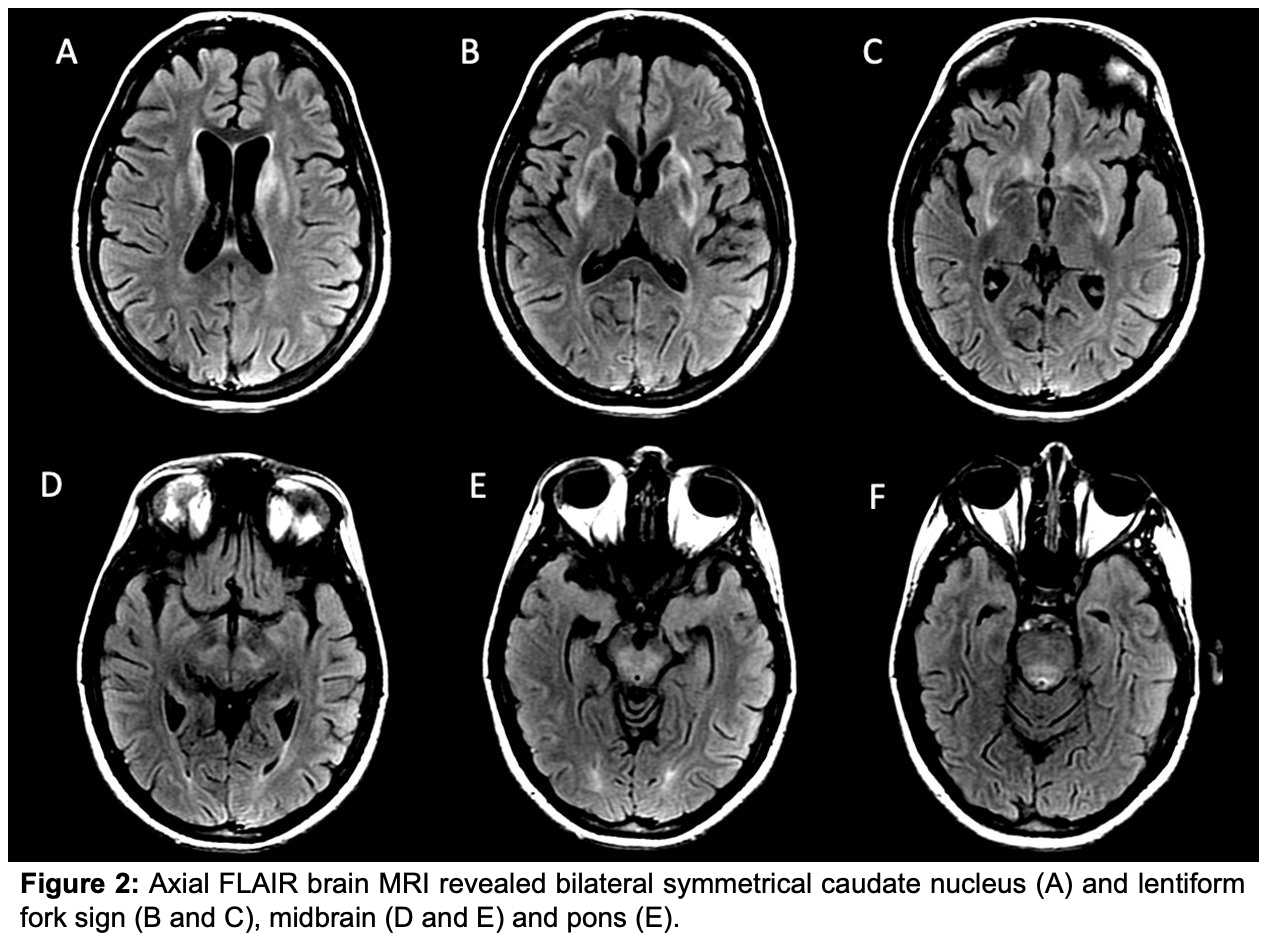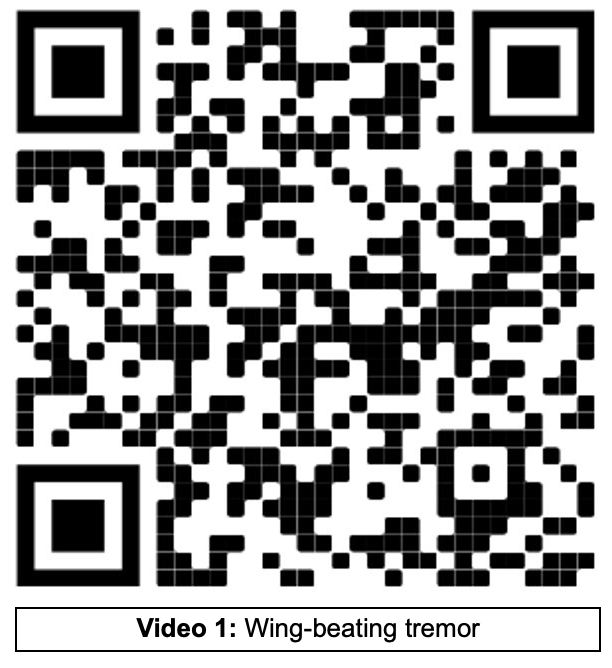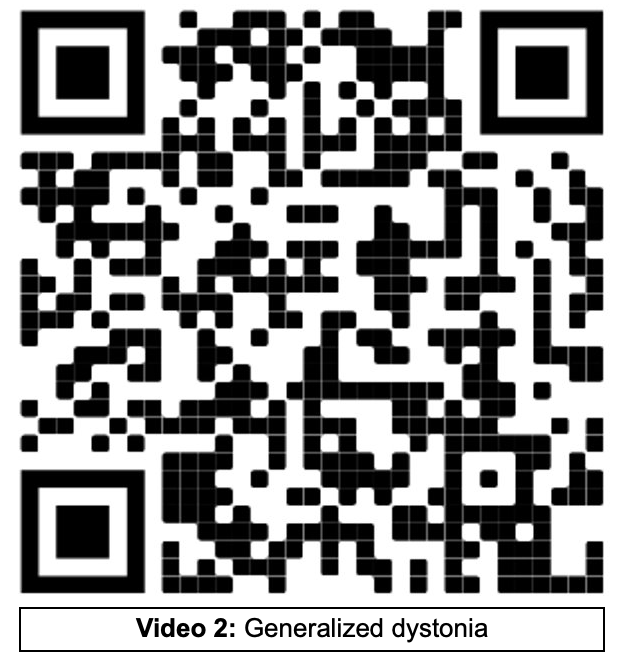Category: Neuroimaging (Non-PD)
Objective: First description of lentiform fork sign in patients with the diagnosis of Wilson disease.
Background: Lentiform fork sign is a rare neuroradiological sign characterized by rim-shaped hyperintensity that delineated medial and lateral borders of both lentiform nuclei. Classically, this sign can be identified in many etiologies that result in metabolic acidosis such as uremic encephalopathy and diabetes1.
Method: We describe a 19-year-old young man presented with a 3-year history of psychiatric disorder, speech impairment, and upper limb tremor (video 1) and a young woman, presented at the age of 23 years with a 9-month past of anxiety and depression and a 2-month history of left upper limb dystonia that progressed with rapidly and severe generalized dystonia (video 2). Both brain MRIs demonstrated a bilateral symmetrical lentiform fork sign (Figures 1 and 2). At the time, none of the patients had metabolic acidosis or uremia. Whole-exome sequencing was performed in both patients and revealed pathogenic variants in the ATP7B gene and confirmed Wilson disease in both cases.
Results: We report two patients with Wilson disease with a lentiform fork sign without evidence of metabolic acidosis. Wilson disease is an autosomal recessive inherited disorder of copper metabolism mainly affecting the brain and liver2. Typically, the brain MRI findings are bilateral T2-W hyperintensity in the thalamus, basal ganglia, pons, and midbrain2. And the typical sign is “the face of giant panda”2.
Conclusion: We described two patients without metabolic acidosis at the time of image acquisition, therefore, we believe that the presence of the lentiform fork sign is a result of undetected metabolic acidosis that occurred during the disease or Wilson’s disease itself. Kumar et al. proposed that metabolic acidosis plays an important role in the pathogenesis of lentiform fork sign3. Thus, it becomes impossible to determine the exact pathophysiology of the lentiform fork sign in those cases. However, we would like to include Wilson in the differential diagnosis of the lentiform fork sign, either as the cause of metabolic acidosis or as a primary etiology.
References: 1. Grasso D, Borreggine C, Perfetto F, et al. Lentiform Fork Sign : a Magnetic Resonance Finding in a Case of Acute Metabolic Acidosis. 2014:288-292.
2. Cz A, Litwin T, Dusek P, et al. Wilson disease. 2018:1-20. doi:10.1038/s41572-018-0018-3
3. Kumar G, Goyal MK. Lentiform Fork sign : A unique MRI picture . Is metabolic acidosis responsible ? Clin Neurol Neurosurg. 2010;112(9):805-812. doi:10.1016/j.clineuro.2010.06.006
To cite this abstract in AMA style:
JL. Freitas, MS. Rocha, PC. Matos, I. Torres, L. Corazza, JF. Tasch. Lentiform fork sign and Wilson Disease [abstract]. Mov Disord. 2022; 37 (suppl 2). https://www.mdsabstracts.org/abstract/lentiform-fork-sign-and-wilson-disease/. Accessed April 20, 2025.« Back to 2022 International Congress
MDS Abstracts - https://www.mdsabstracts.org/abstract/lentiform-fork-sign-and-wilson-disease/




